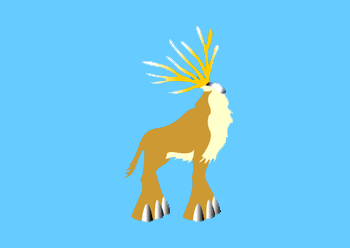

 |
|||||||||||||||||||||||||||||
|
| |||||||||||||||||||||||||||||
|
"The hunted must discover how to become the hunter" (Nie Ascherson, quoted in David Garcia and Geert Lovink, "ABC des medias tactiques," Connexions, p: 761)
STATEMENT: "Virus Corp allows the visitor to unleash a pseudo-virus, in the form of an animated creature (Virus Corp), on a corporate website of their choice. The creature is 'in-CORP-orated' in both interpretations of the word; having a physical body and being legally (omnipotently) incorporated.The creature's design is influenced by the Shishi Gami (Great Forest Spirit/the God of Life and Death) from Hayo Miyazaki's Anime feature 'Princess Mononoke'. In the film Shishi Gami dwells in a glade deep in the forest. With each step all life blooms beneath him, only to dissipate immediately. He is revered as the giver and taker of life.These corporations which act as gods with omnipotent rights due to their financial assets have met a new foe: Virus Corp symbolically goes head to head with the virtual representations of corporations on the internet." (Tara Bethune-Leamen) The creature in Virus Corp is a simplified figure, exaggerated, cartoon-like, vibrantly coloured, and representing a kind of mythical stag or reindeer, with no eyes or mouth and large paws. A blind, primitive animal force that, once thrown like a foreign body on a site of the visitor's choosing, joyfully stomps and tramples on it, from right to left and left to right, adding the marks of its passage, which it gradually superimposes on those elements that composed the original content. From this, another image results on the screen, as the accumulation of traces leaves unexpected forms that thwart the site's overly utilitarian design to produce a muddled, haphazard, and impermanent (though momentarily printable) "art work." Bethune-Leamen gives us the opportunity, not to destroy or otherwise harm the invested sites (as would a "true" virus), but more peacefully and simply to mark the territory of our chosen sites with our passage, thanks to the Shishi Gami's coming and going, substituting itself for us and becoming our representative. The more powerful the "victim," of course, the more satisfying the transgression. From this point of view, the work in question greatly resembles graffiti culture, where the fact of having tagged big name ads, for instance, constitutes a feat and at the same time a critique (invariably playful however) of the consumer world, which, alas, becomes increasingly confused with the only known or recognized world, one with no outlet. Thus, as emphasized in the introduction reproduced above, the struggle here is played out at the level of "virtual representations." For the Shishi Gami is only a "pseudo-virus" - doubly virtual, as both digital "creature" and as a symbol. It can, by turns or simultaneously, represent nature's revenge and that of the animal world over culture and the human realm, the irruption of disruptive play in capitalism's marketing logic, or the return of the suppressed. It is foremost a war of images.
To summarize, Bethune-Leamen shows us in her Virus Corp that it is in style that aesthetics and ethics, form and content, meet and merge. But the style of this work, with its vibrant colours taken from Japanese Anime and its use of Flash, doesn't have much to do with net.art purists. In this, Virus Corp may be seen as typical of an advance in the field of Web art, drawing its inspiration from the origins of Pop Art, which it regenerates, instead of from an often too-rigid and too-narrow minimalism.
Anne-Marie Boisvert NOTES: 1 and 2 - Bureaud, Annick and Nathalie Magnan, Eds. Connexions. Arts, Réseaux, Médias. École nationale supérieure des beaux-arts, Paris, 2002. |
||||||||||||||||||||||||||||
